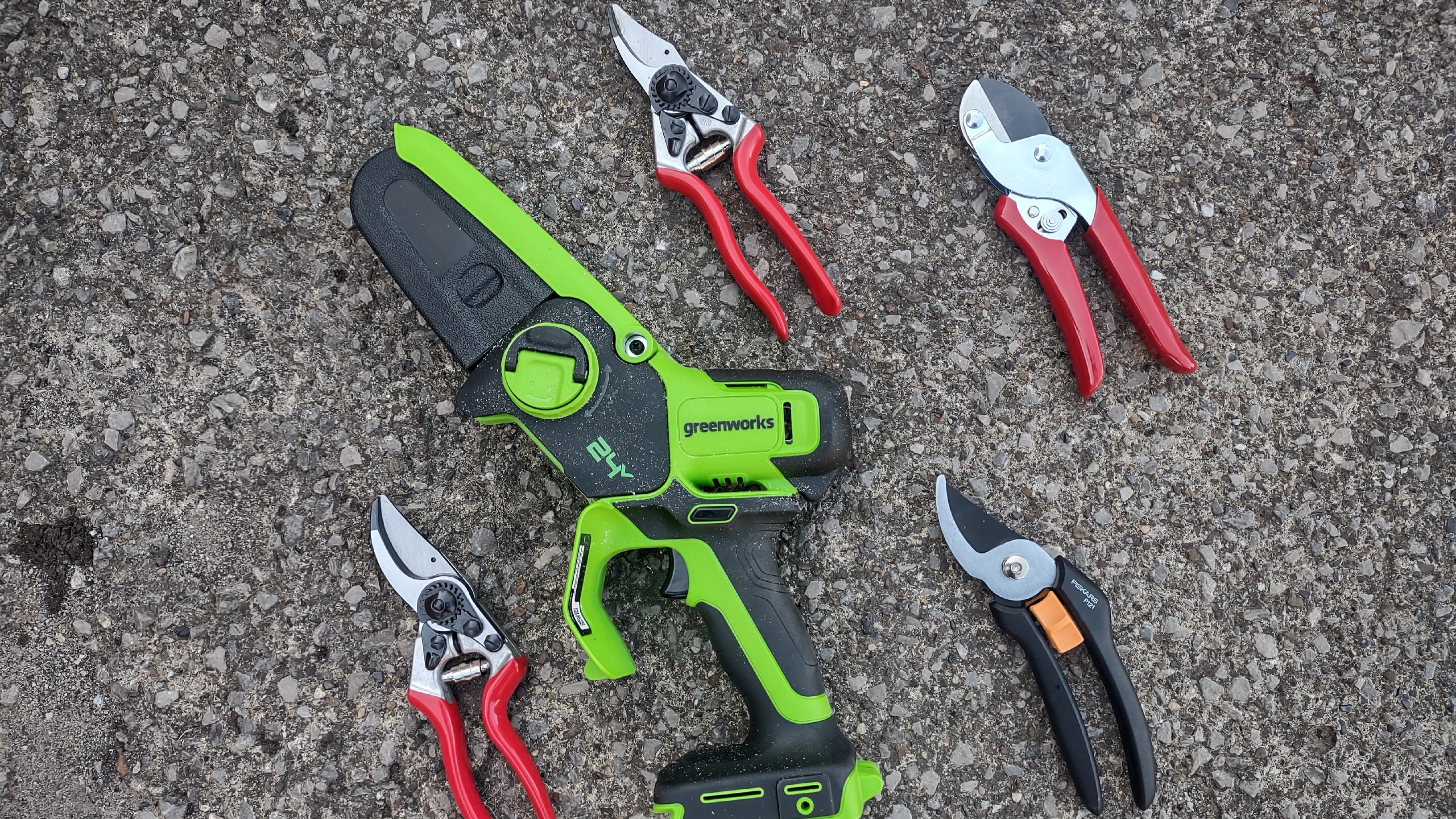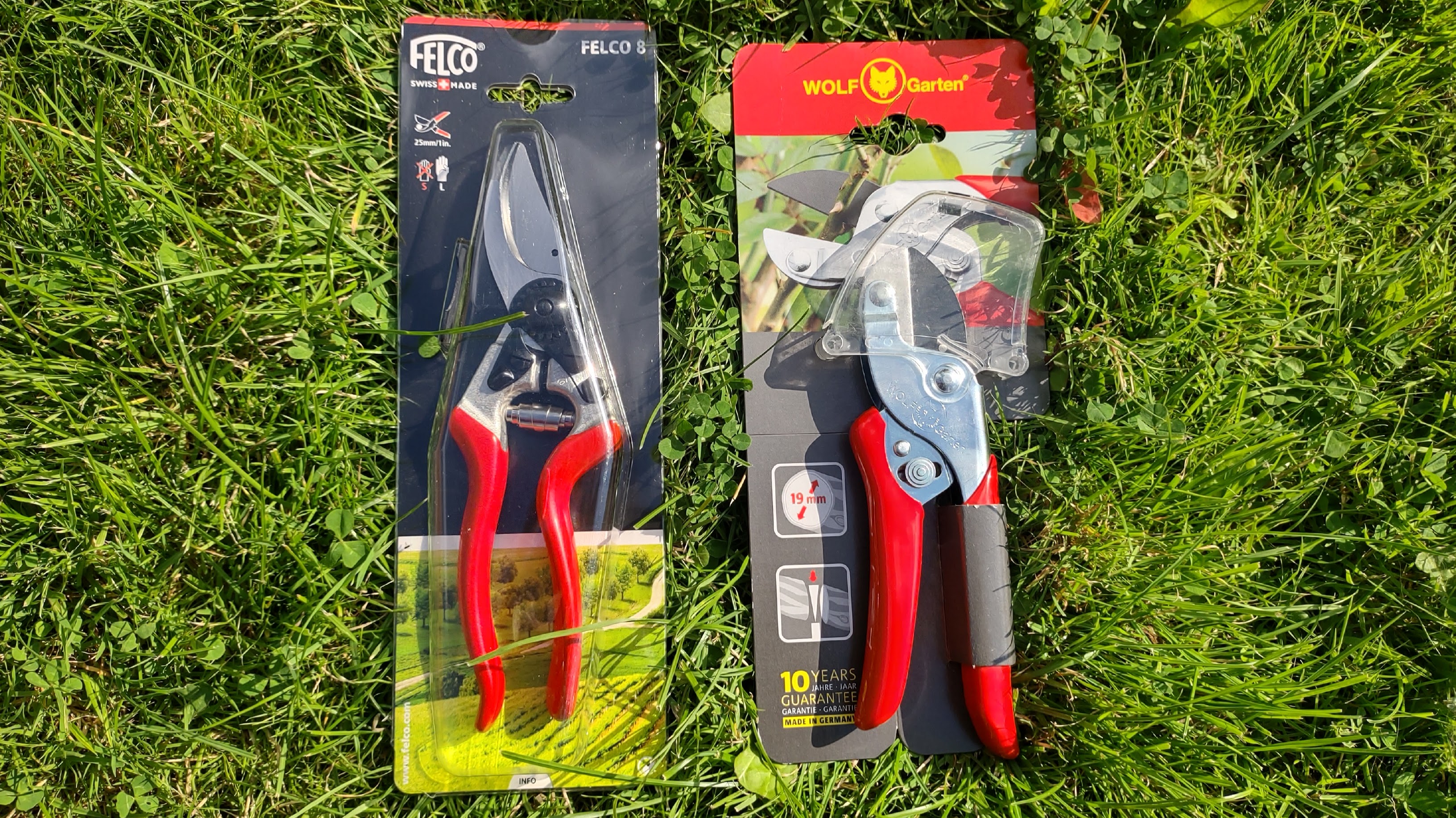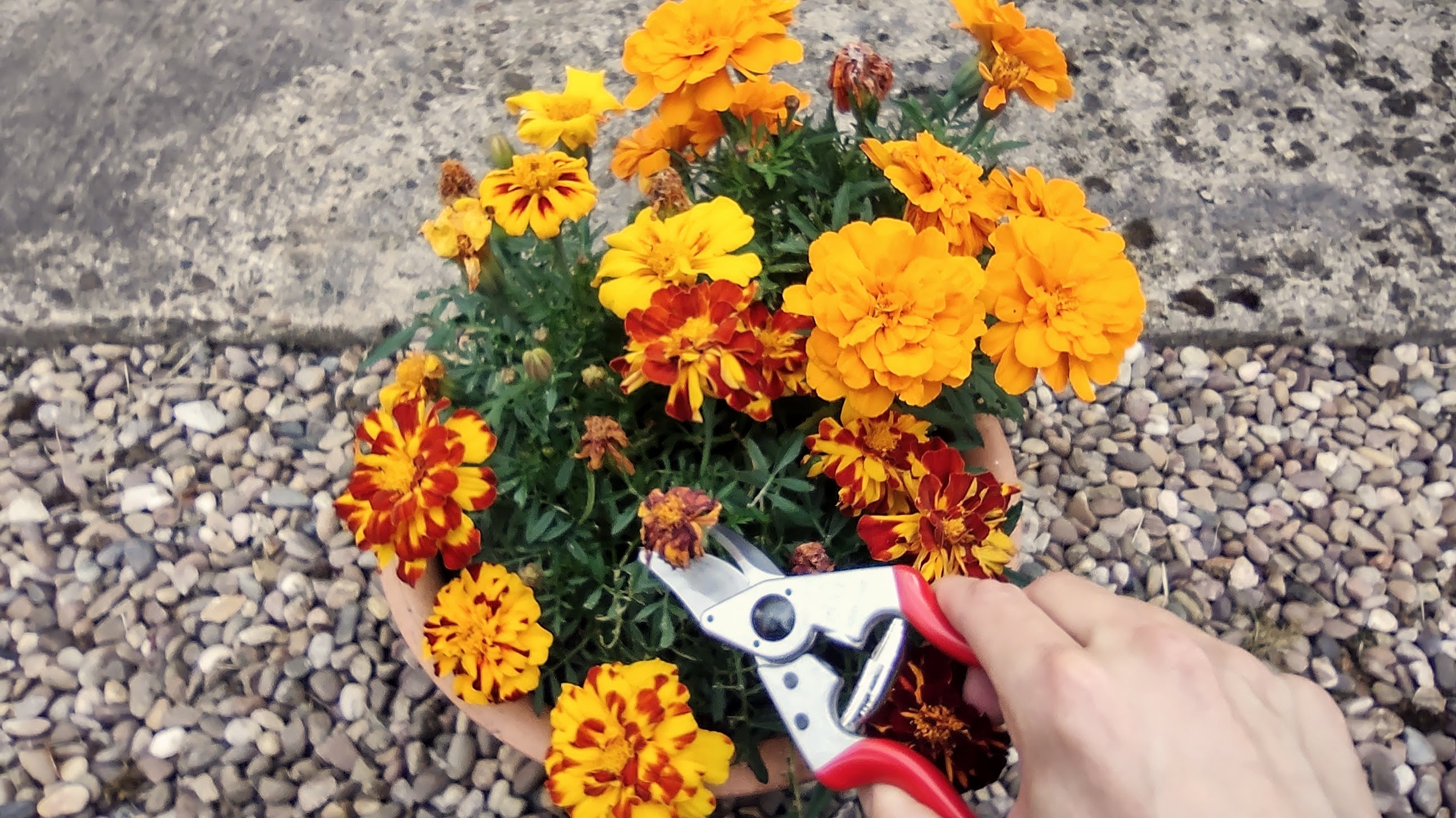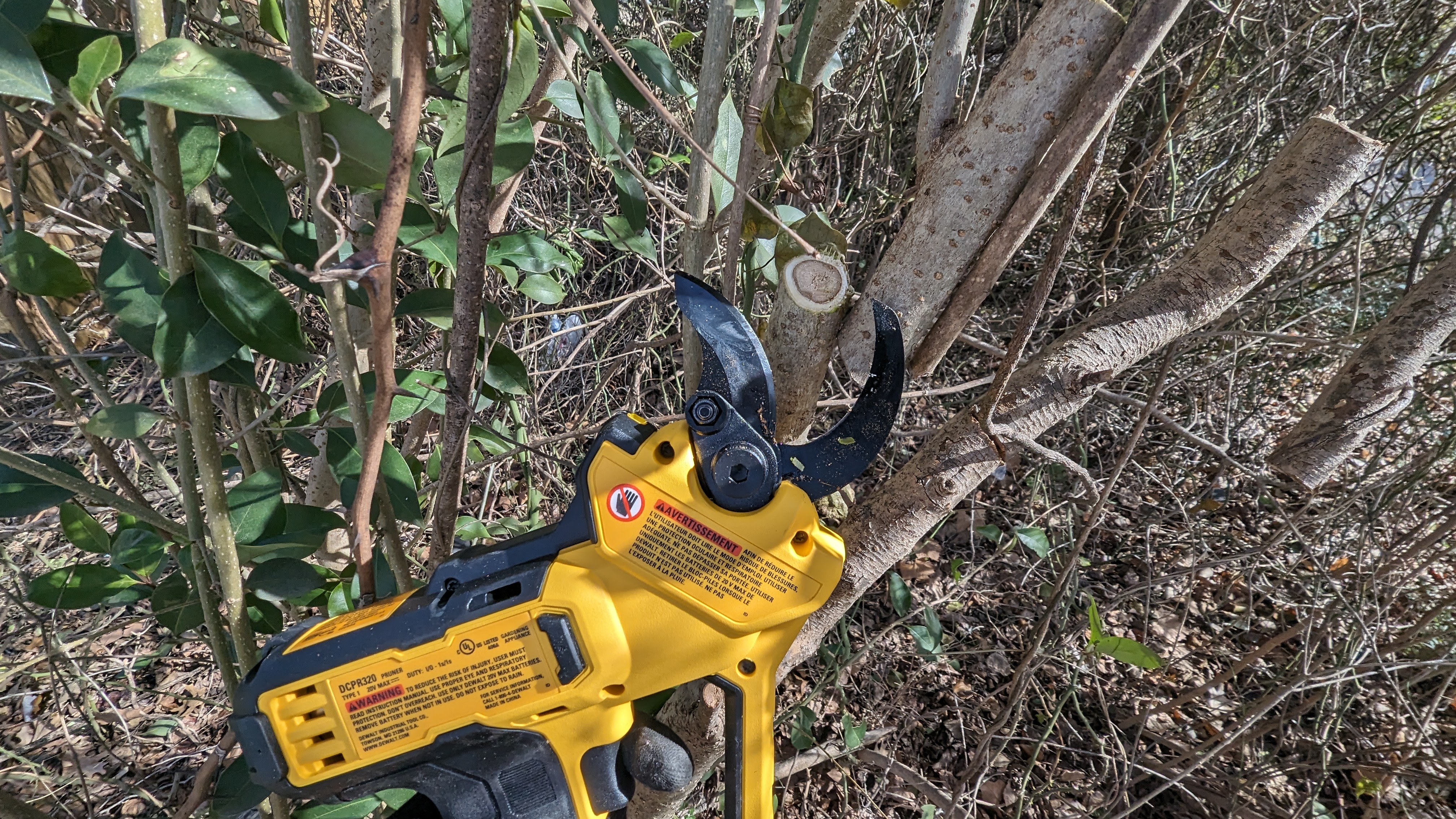
It’s no accident that the best pruners vary widely. Ranging from tiny pruning snips and sharp-bladed bypass pruners to powerful anvil pruners and loppers, this family of tools caters for all sorts of people, and for pretty much every plant or tree that’s likely to live in your yard or garden.
Pruners are used for cutting work that can improve the health and appearance of plants. You can use them to prune a tree, deadhead flowers, take cuttings, or cut back excess foliage.
The diversity of pruning shears is a good thing, but it means you’ll need to do some research before you go ahead and buy a pruner. In this guide, we’ll help you make the right choice by talking through the key decision factors that go into selecting a pruner – from size and pruner type to finer details such as the tool’s features and ease-of-maintenance.
As well as offering our own team’s expertise, we’ll bring in some sage advice from Malcolm Walker, a Merchant specializing in Watering and Hand Tools at The Home Depot.
“Choosing the right pruner ensures clean cuts, minimizes damage to plants, and facilitates efficient maintenance of your landscape,” Malcolm notes.
Before you use your new pruning shears, take a moment to read about the most common pruning mistakes, which can cause harm to plants, rather than producing the intended benefits.
How to choose a pruner
1. Consider what you'll be pruning
First, think about the types of plant or tree that you’ll use your new pruner to cut. How thick are the stems? And are the plants woody, tender or sinuous? Does your budget dictate that you need one pruner to cut the widest possible variety of plants?
Once you’ve considered the plants that need pruning, you’ll be in a better position to select the right kind of pruner. There are several types of pruning shears (or secateurs, as they are known in Europe), as well as related tools such as loppers and pruning saws.
Bypass pruning shears such as the Felco No. 6 have sharp blades that cut material as they pass against each other, hence ‘bypass’. They tend to be good all-rounders, capable of cutting both plant stems and slender tree branches.
Anvil pruning shears like the Wolf-Garten RSEN have one blade that’s sharp, for cutting; and one blade that’s broad and flat, for crushing. This makes them particularly well suited to cutting tough, sinuous plant stems and moderately hard tree branches.
Pruning snips are the smallest type of pruner. They have two long, sharp blades, designed to help users precisely cut thin, tender plant stems. This type of pruner is ideal for deadheading flowers, and taking cuttings for propagation. A good example is the Fiskars SP13.
Loppers are two-handed tools that work similarly to a bypass pruner or anvil pruner. Their design helps the user to generate enough leverage to cut through tough, relatively thick tree branches. We can recommend the reasonably-priced Fiskars PowerGear Anvil Lopper XS L31. A special type of lopper, called a pole lopper, uses a telescopic shaft and trigger-activated jaws to cut branches above head height.
Pruning saws are saw-type cutting tools used for pruning tree branches. They can typically be used for cutting thicker branches than a pruner or lopper could manage. Both electric and manual pruning saws are available. We were impressed with the Greenworks 24V 6" Brushless Pruning Saw, which is powered by a lithium-ion battery.
“A good rule of thumb is to keep a few pairs of pruning shears in various sizes for different tasks,” Malcolm advises. He recommends bypass pruners for cleanly cutting green stems and branches, anvil pruners for cutting dead or woody branches, and pruning saws for wider cuts.
For cutting very thick tree limbs, properly trained users should consider choosing a chainsaw instead of a pruner.

2. What's the cutting width?
This pruner specification describes the maximum width of tree branch that a pruner can cut. All pruners are limited in this regard by the maximum extent to which their blades will open.
Trying to prune a tree branch that exceeds your pruner’s maximum cutting width will usually result in failure, and sometimes causes damage to the tool. So, make sure a pruner’s cutting capacity matches up to the branches you’re going to prune, before you buy.
3. Look for features
Not all pruners are made equal. In fact, features vary widely across models and types. One powerful feature to look out for is a force multiplier mechanism.
“Many pruners have mechanisms that provide extra leverage when cutting to increase strength,” Malcolm explains.
“The Fiskars PowerGear2 3/4 in. Cut Capacity Titanium Coated Blade with SoftGrip Handle Bypass Hand Pruning Shears ($29.98 at Home Depot) has a patented gear mechanism that adjusts the handle while cutting for maximum leverage and power and also features a titanium coated, hardened steel blade that will stay sharp, even through heavy use,” he says.
Speaking of blades, the blade design of a pruner naturally has a major impact on its cutting performance.
“A pruner blade with a slippery surface will reduce friction with cutting and increase efficacy, while a sharp blade will also aid in cutting faster and easier,” says Malcolm.
4. Set your budget
Pruners come at a variety of price points that will suit most budgets. There are wallet-friendly brands such as Fiskars, mid-range makers like Wolf-Garten and Spear & Jackson, and premium manufacturers including Felco and Niwaki, to name just a few of the options.
The right amount of money to spend on a pruner is really a matter of personal choice. If you’re looking for a tool that will last for many years, then it’s probably a good idea to buy a mid-range or premium model. With that said, getting a long lifespan out of any pruner will require occasional maintenance. If you don’t have much time for tasks like cleaning and sharpening your pruner, it might not be worthwhile to buy a premium model.
5. How much maintenance are you willing to do?
Certain models of pruning shears are much easier to take care of than others. This largely depends on whether the pruner can be taken apart – which you’ll sometimes need to do in order to clean the blades or sharpen them. When you buy a pruner that doesn’t have an accessible mechanism for adjustments, you’re pretty much accepting a short-term solution.
Meanwhile, if you’re shopping for a pruner that will last for many years, check for availability of spare parts. Even the best pruning shears are likely to break or wear out eventually, so you should buy your pruner from a brand that stocks a comprehensive range of spare parts.
Felco leads the way in terms of reparability: the Swiss brand stocks spares of almost all of its pruning shears components, and usually provides a maintenance key with its shears, to help you easily disassemble and reassemble them.
“Some pruners require regular maintenance, such as sharpening blades or lubricating moving parts, so consider choosing a pruner that aligns with your preferences or skills,” says Malcolm.
He recommends the DEWALT 20V MAX Cordless Battery Powered Pruner (Tool Only) ($89 at Home Depot) as an option that’s designed to operate over a long period of time with minimal maintenance.

6. Check the sizing
The size of your hand will determine which pruners you can use comfortably. Many one-handed pruning shears are sold as ‘Small’ (‘S’), ‘Medium’ (‘M’) or ‘Large’ (‘L’). This should give you a good ballpark idea of whether the tool will fit your hand.
However, if you’d like a more precise indication of whether a pruner is a suitable size for you, you should be able to find the tool’s dimensions on the manufacturer’s website.
7. And check the weight
Similarly, you should think about your ideal weight of pruner, before you buy one. Pruning work often takes a long time – especially if you have multiple trees or large plants. So, you need a tool that you’re happy to hold (or carry in a holster) for hours at a time.
Somewhere around half-a-pound (or 250g) is a standard weight for a pair of pruning shears. If you need something lighter, you might want to look at an affordable pruner with plastic handles, such as the Fiskars Plus Smartfit Bypass Pruner P541

8. Opt for a style that suits
Pruning shears come in a range of styles, from traditional models with coated metal handles, to modern, lightweight alternatives. If you care about the appearance of your new horticultural sidekick, then we’d recommend focusing on the color and form of the handles (also known as the ‘shanks’), as this part of the tool can vary greatly without affecting the cutting action.
If you’re looking for a really special one-handed pruner, then you might want to find a model that comes with a holster (sometimes referred to as a sheath). Often made from leather, a holster gives the pruner some protection from scratching and rust. Many of these accessories provide easy, on-the-go access to the pruner by looping onto your belt. If your chosen pruner does not come with a holster, you can probably still buy one that’s a good fit.







